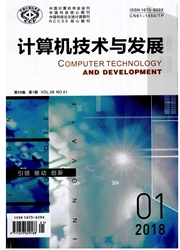

 中文摘要:
中文摘要:
压缩感知理论的一个重要前提是找到信号的稀疏域,其直接影响着算法的重构精度,研究快速高效的信号稀疏表示方法具有重大的现实意义。为了提高字典训练速度与性能,基于传统的K-SVD算法,提出了一种自适应K-SVD字典学习算法(Adaptive K-SVD)。该算法交替执行稀疏编码阶段和字典更新阶段。在稀疏编码阶段,通过引入自适应稀疏约束机制,以获得更稀疏的表示系数,从而进一步提高字典的更新效率;而在字典更新阶段,则使用经典K-SVD的字典更新方式来实现字典原子的逐列更新。将所提算法应用于压缩感知理论的信号稀疏表示中,实现视频帧的稀疏重建。仿真对比实验结果表明,所提算法比经典的K-SVD算法的字典训练速度更快,稀疏表示性能更优,且能有效减少压缩感知的重构误差。
 英文摘要:
英文摘要:
Finding sparsifying transforms is an important prerequisite of compressed sensing, which directly affects the reconstruction accu- racy. It has practical significance to research the fast and efficient signal sparse representation method. Based on the traditional K -SVD al- gorithm, an adaptive K-SVD dictionary learning algorithm has been proposed to improve the speed and performance of dictionary training which is an iterative one that alternates between sparse coding and dictionary update steps. In the sparse coding stage, an adaptive sparsity constraint has been utilized to obtain sparser representation coefficient, which has further improved the efficiency of the dictionary update stage. And in the dictionary update stage,the dictionary atoms are updated column by column using the classic K-SVD dictionary update method. With the novel adaptive dictionaries as sparse representation for video frame compressed sensing, comparative experimental re- sults demonstrate that the proposed adaptive K -SVD dictionary learning algorithm achieves better performance than traditional K -SVD algorithm in terms of running time. In addition, the new method has better signal sparse representation performance, and also can reduce the reconstruction error of compressed sensing.
 同期刊论文项目
同期刊论文项目
 同项目期刊论文
同项目期刊论文
 期刊信息
期刊信息
